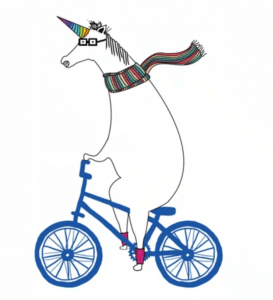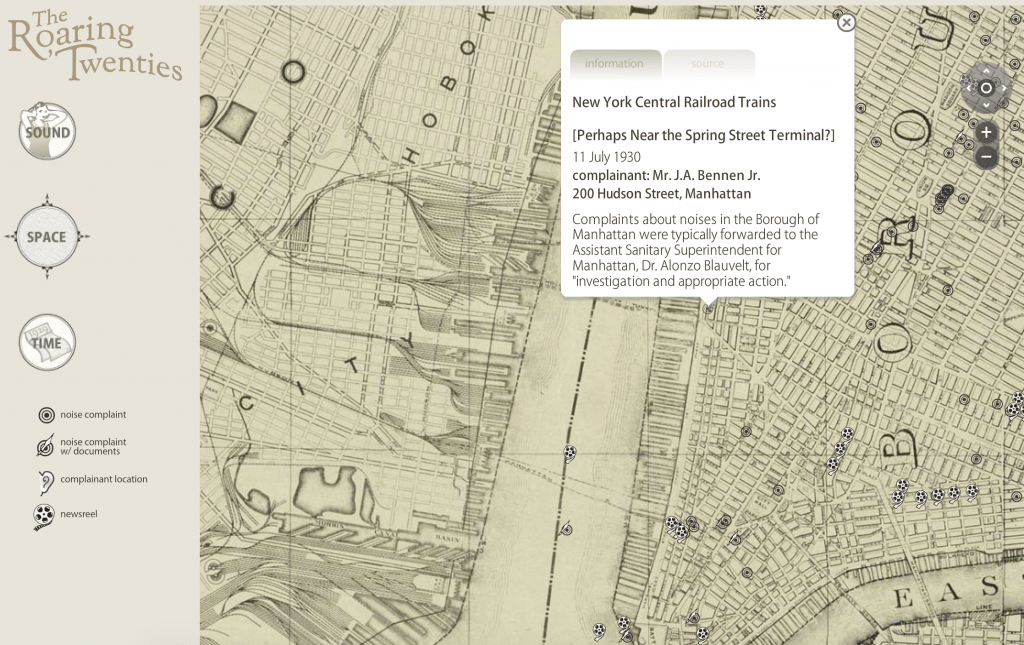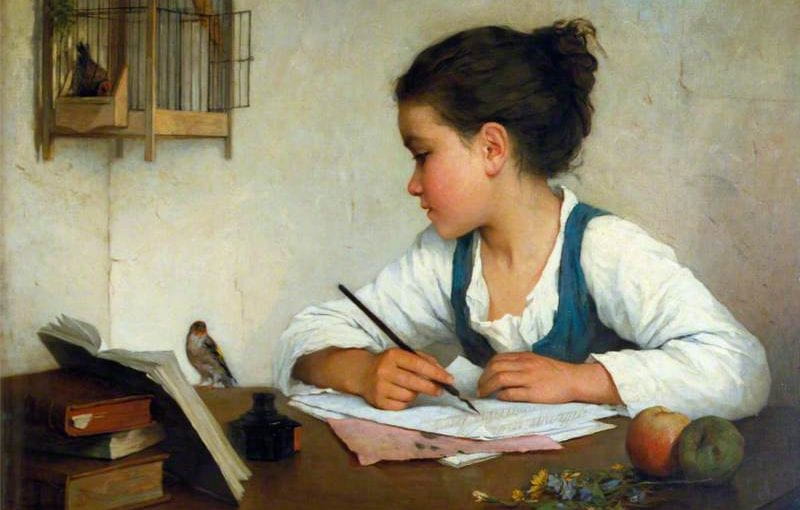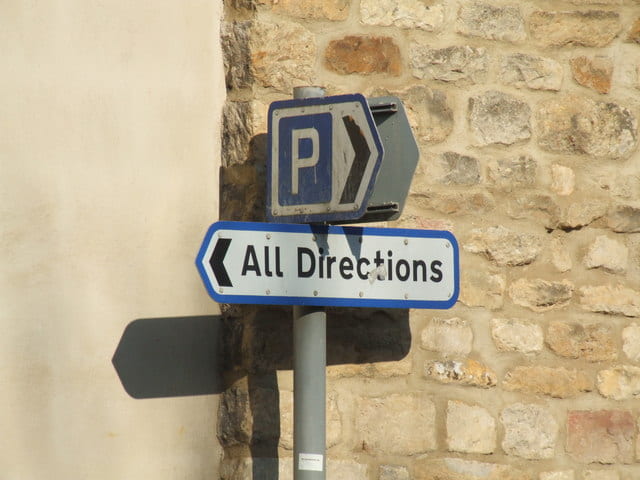Research is in the eye of the beholder. –Not-so-ancient proverb
When I begin a new research project, I feel very much like how I imagine the girl in this painting, A Girl Writing, by Henriette Browne to be feeling–excited by so many intellectual and imaginative prospects, but also easily distracted by the wonder of the world around me and all that I am discovering.
When conducting my own, personal research (i.e., when unprompted by a specific topic for a class exercise), I tend to begin with a topic that interests me. For example, prior to my semester studying abroad in Scotland, I thought it was a good idea to learn as much as I possibly could about Scottish culture, society, geography, history… The list goes on. I began by watching documentaries and reading travel guides geared towards tourists, with the intention of gaining knowle dge of the basics (for example, did you know that the bicycle was invented in Scotland? Or that the national animal is the unicorn? Yeah, Scotland is pretty cool). From there, I found that I had deeper interests in specific topics, such as the clan system, folklore, and music. I also wanted to learn more about the town of St Andrews specifically, where I was preparing to study and to live. With these topics in mind, I then sought out resources (films, documentaries, books, poetry, art, and songs) to give me more information concerning them. As I discovered, questions began formulating in my mind, and I took on some side-research to find answers as I continued on. I learned quite a lot this way, and enjoyed how one topic would lead into another, which would lead to another and another… The possibilities were endless!
dge of the basics (for example, did you know that the bicycle was invented in Scotland? Or that the national animal is the unicorn? Yeah, Scotland is pretty cool). From there, I found that I had deeper interests in specific topics, such as the clan system, folklore, and music. I also wanted to learn more about the town of St Andrews specifically, where I was preparing to study and to live. With these topics in mind, I then sought out resources (films, documentaries, books, poetry, art, and songs) to give me more information concerning them. As I discovered, questions began formulating in my mind, and I took on some side-research to find answers as I continued on. I learned quite a lot this way, and enjoyed how one topic would lead into another, which would lead to another and another… The possibilities were endless!
Today, my research methods in those types of situations are much the same, and have been guiding my first week of the internship. I’ll start with looking at a list of Amherst College presidents because I don’t know much about them, become interested in William Augustus Stearns because I lived in a dormitory named after him, read the program and speeches given at his inauguration, read snapshots of his life written by one of his colleagues, and finally end up digging through the archives to look at his personal letters… All the while finding interesting tidbits that make my mind go in a million other directions.
While exhilarating, this method can also be exhausting while not being exhaustive (though, is it really possible to ever research everything about anything?), which made Trevor Owens’ article “Where to Start? On Research Questions in the Digital Humanities” an interesting read for me. While it may seem like the logical thing to do, I don’t usually begin any sort of research with a question–at least, not one that I’m cognizant of. Owens notes that “research questions are useful structures to organize your work and inquiry,” which is a great point, also reflects on the importance of establishing goals when doing research. Both of these points have actually been huge focuses of the last few days of this DSSI Summer, and I’m definitely seeing how valuable they are, particularly when tackling topics that are large, complicated, and laden with historical and archival material to sift through (COUGHthefirstdecadesofAmherstCollegehistoryCOUGH).
I’m quite excited to continue researching and exploring topics within Amherst’s early history–as a team, we interns have come up with some incredible questions and ideas, and the Digital Humanities tools that we’re beginning to use are already proving to be invaluable to our tasks. In particular, I’m excited about creating some sort of interactive map for viewers to engage with that connects the architecture and landscape of the contemporary campus with that of the mid-19th-century campus. GIS mapping tools could provide amazing platforms for this potential project, and I’m really thankful for the various mapping websites that we looked at (such as two of my favorites, The Roaring Twenties: An Interactive Exploration of the Historical Soundscape of New York City and Geography of the Post: U.S. Post Offices in the Nineteenth-Century West), which are each giving me ideas and expanding my conception of what is physically possible to create.

Moving forward, I’m eager to continue exploring answers to the questions that the other interns and I have come up with–it’s amazing that we have so many resources at our disposal, and that we’re learning so many new tools to help with researching and presenting! I can’t wait to see what we come up with!

